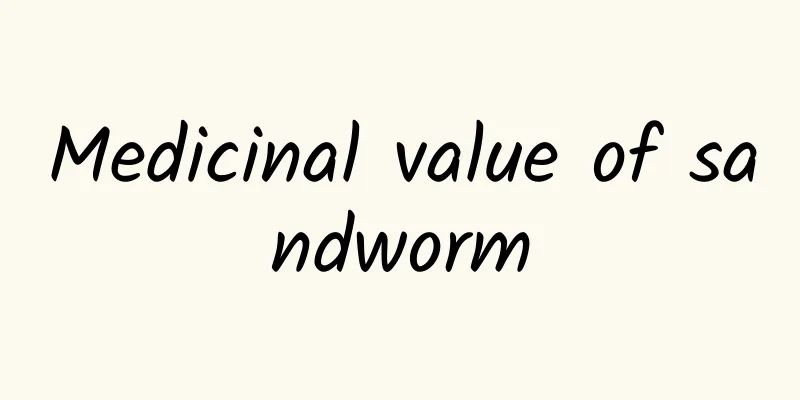The efficacy and function of wormwood leaves

|
Recently, major TV channels have launched various health programs, and food programs have also introduced special health-preserving dietary therapy methods. All aspects show that the concept of health preservation is gradually deepening in people's understanding. Next, we will introduce a health-preserving medicinal material, Artemisia argyi. 【English name】 Oakleaf Ajania [Source] Medicinal material source: the whole herb of the subregion of the Asteraceae family. [Original form] Oak-leaved chrysanthemum is a semi-shrub, 60-150cm tall. The old branches are gray-black, and the upper inflorescence branches and pedicels are covered with white silky hairs. Leaves are alternate; leaves have short petioles, and there are no auricles at the base of the petioles; middle leaves are oblong, lanceolate, obovate-oblong, rarely broadly linear, 5-8cm long, 2-4cm wide, with coarse teeth or notched shallow or deep lobes on the edges, with 3-4 pairs of lobes; middle and upper leaves are unlobed, linear-lanceolate or linear, up to 10cm long, and upper leaves gradually become smaller, with hard leaves, green and glabrous above, and white and densely covered with silky hairs below. There are many capitulums, which are umbels at the top of the branches, with thick branches and pedicels; the involucre is bell-shaped, with 4 layers of bracts, the outer layer is ovate-lanceolate, the middle and inner layers are oblong to lanceolate, the outer layer is sparsely silky, and the edges are membranous; there are 11 female flowers, which are marginal, with thin tubular corollas and 4 teeth, one of which is larger; bisexual flowers are tubular, 3mm long, and the entire corolla is yellow with glandular dots on the outside. Achenes 1.5mm long. Flowering and fruiting period is August to October. [Habitat distribution] Ecological environment: Growing under hillside forests and in forest edge thickets at an altitude of 3200-3900m. 【Nature and flavor】 Bitter; pungent; warm 【Functions and indications】Warms the meridians and stops bleeding; dispels cold and relieves pain. Mainly used for irregular menstruation, metrorrhagia, and dysmenorrhea [Usage and Dosage] For oral use: decocted in water, 3-9g. [Discussions by various scholars] "Xinhua Compendium of Materia Medica": The above-ground part: used as mugwort leaf. 【Excerpt】 Chinese Materia Medica Through this article's detailed introduction to the effects of wormwood leaves, we can learn about the several major effects of wormwood leaves. These effects are indeed a good way to regulate the body for people with poor physical constitution and low resistance. Everyone can try it. |
<<: The efficacy and function of mountain cypress
>>: The efficacy and function of the root of thread leaf flea
Recommend
These vegetables are simply "natural MSG", boiled in water = "vegetarian soup" that's so delicious it's eyebrow-dropping
A pot of delicious and refreshing soup with diver...
The efficacy and function of Catalpa
As people's living standards continue to impr...
Throwing a baby dolphin to death like a ball! How terrible is it that the killer whale has been focusing on bullying for 60 years?
On July 25, 2022, killer whale researcher Deborah...
Why do some people get diarrhea when they eat spicy food, get nervous, or catch a cold? The mystery that has lasted for many years has finally been solved
Expert of this article: Wang Xiaohuan, Doctor of ...
What are the effects and functions of Astragalus and Wolfberry?
For most people, having a healthy body is more im...
Laughing, but not quite! How does your brain read emojis?
© Freepik Leviathan Press: The same sentence, for...
Hitwise: Ranking of Brazilian travel websites as of the week of May 12, 2012
Hitwise: Ranking of Brazilian travel websites for...
The efficacy of Chinese medicine Polygala tube
Polygala tube, which we often call Polygala, is m...
National Retail Federation: Total holiday online shopping sales will grow 8%-9% in 2024
The National Retail Federation predicts that wint...
Ancient soft-bodied fossils
1. Even if you don’t have a hard bone, you still ...
Can Polygonum multiflorum be used to treat hemorrhoids?
Polygonum multiflorum is a relatively common spec...
The efficacy and function of cotton seeds
Cottonseed is a traditional Chinese medicine. It ...
The efficacy and function of large-leafed ear root
Many people know that the large-leafed ground ear...
The efficacy and function of the light-thorn rabbit lip flower
We know that there are many kinds of Chinese medi...
The efficacy and function of cod liver oil
Everyone is familiar with cod liver oil. Even in ...









